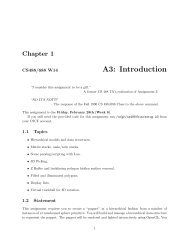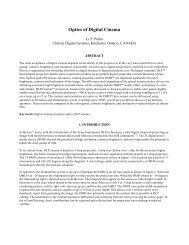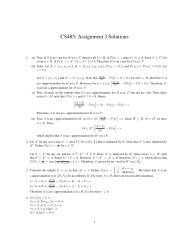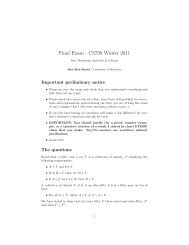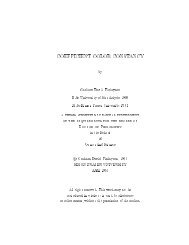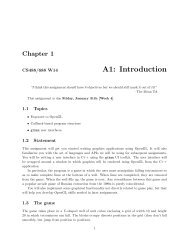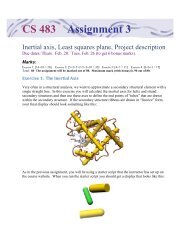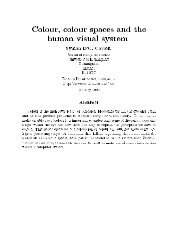Past Midterm and Exam Questions (PDF) - Student.cs.uwaterloo.ca ...
Past Midterm and Exam Questions (PDF) - Student.cs.uwaterloo.ca ...
Past Midterm and Exam Questions (PDF) - Student.cs.uwaterloo.ca ...
Create successful ePaper yourself
Turn your PDF publications into a flip-book with our unique Google optimized e-Paper software.
CS488/688 Introduction to Computer Graphi<strong>cs</strong> 43<br />
15.13 Lighting [Last Used: Spring 2000 Final]<br />
Given a point for shading on a surface, we usually consider a normal vector ⃗n, a vector to the light<br />
source ⃗ l, a vector to the viewer ⃗v, <strong>and</strong> a reflection direction ⃗r (all vectors are of unit length). One<br />
possible version of the illumination equation is<br />
I out (⃗v) = k a I a + ∑ i<br />
(<br />
k d + k s<br />
P (⃗r, ⃗v)<br />
⃗n · ⃗l<br />
) ⃗ l · ⃗n<br />
I0<br />
i c 1 + c 2 d i + c 3 d 2 i<br />
a) Give an equation for the reflection direction vector ⃗r in terms of vectors ⃗ l <strong>and</strong> ⃗n.<br />
b) Define the Phong shading term P (⃗r, ⃗v) in terms of ⃗r, ⃗v, <strong>and</strong> a parameter p. For wider highlights<br />
on the surfaces is p increased or decreased?<br />
c) What is the term k a I a ? How does increasing I a affect the rendering of objects in the scene?<br />
d) What is the term c 1 + c 2 d i + c 3 d 2 i ? How is d i <strong>ca</strong>lculated? Suggest values for c 1 , c 2 , c 3 that<br />
would give harsh point lighting, as in outer space?<br />
e) This equation doesn’t mention R, G, or B, <strong>and</strong> yet we use it to render coloured objects. How<br />
do we adapt the equation to h<strong>and</strong>le RGB?<br />
15.14 Flat, Gouraud, <strong>and</strong> Phong Gouraud Shading [Last Used: Winter 2013<br />
Final]<br />
Suppose we are working in 2D <strong>and</strong> shading lines. Consider the following line segment (the thick<br />
line) with normals at its vertices, <strong>and</strong> a point light source:<br />
n 0 n 1<br />
V 0 V 1<br />
Describe how the line segment will look when shaded with the following three shading models,<br />
noting in particular where the brightest point on the line segment V 0 V 1 will occur. Assume that<br />
the line segment has only diffuse reflection components, that there is no ambient lighting, <strong>and</strong> that<br />
all lighting is gray s<strong>ca</strong>le (i.e., no colour).<br />
1. Flat shading<br />
Description:<br />
Brightest point:



